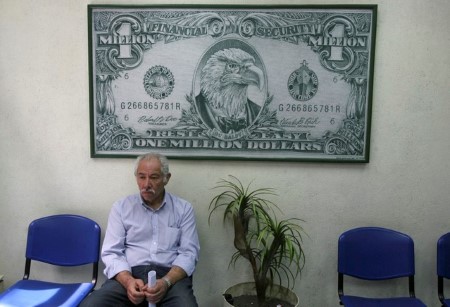




Philippines Trade Update: Exports momentum continues
 DOWNLOAD
DOWNLOAD

Quarterly Economic Growth Release: More BSP cuts to come
 DOWNLOAD
DOWNLOAD

Monthly Economic Update: Fed catches up
 DOWNLOAD
DOWNLOAD


Yields rise as investors await growth, inflation data

NEW YORK, Jan 23 – Treasury yields rose on Tuesday as investors await economic growth and inflation data later in the week that could influence when the Federal Reserve decides to cut interest rates.
The Treasury sold USD 60 billion in two-year notes at a high yield of 4.365%, in an auction that barely budged prices despite concerns about rising government debt issuance, which has led some investors to demand a higher risk premium.
The yield on two-year notes, which reflects interest rate expectations, rose 0.4 basis points to
4.381% after trading as high as 4.419%.
The Treasury has increased sales of two-year notes at auction from USD 57 billion in December and USD 54 billion in November. Another USD 61 billion of five-year notes will be sold on Wednesday and USD 41 billion of seven-year notes on Thursday.
The likelihood policymakers cut rates in March has fallen to less than 50% from about a 75% probability a month ago after Fed officials last week pushed back on market expectations of up to 150 basis points of rate cuts this year.
The recent bond rally might not have been priced for perfection, but it was anticipating a lot of good news and set up for disappointment, said Kevin Flanagan, head of fixed income strategy at WisdomTree in New York.
“Every week the Treasury market has been getting a little punch here, a little punch there, you know, trying to take some of the air out of that balloon,” he said.
“You had the pushback from the Fed last week. That played a big role in just resetting Treasury yields here in 2024.”
Investors await the first estimate of gross domestic product for the fourth quarter on Thursday and the Personal Consumption Expenditures index (PCE) on inflation on Friday.
The Treasury will issue a general financing estimate on Monday and details on any auction size increases on Jan. 31.
The Treasury is likely to increase auction sizes across most maturities, with the exception of 20-year bonds, said Vail Hartman, US rates strategist at BMO Capital Markets.
The Treasury’s refinancing estimate has gained greater focus since the government last July sparked a bond sell-off after announcing higher-than-expected borrowing needs for the third quarter.
“Who’s going to buy all this Treasury debt?” said Tom Simons, money market economist at Jefferies in New York. “It’s fair to expect that we’re probably going to get some pushback on the supply side here through the end of the month.”
The yield on the benchmark 10-year note rose 4.6 basis points to 4.140%.
The curve that measures the difference between yields on two- and 10-year Treasuries flattened further at -24.3 basis points. When the shorter-dated security’s yield is higher than the long end, or inverted, it is seen as a recession harbinger.
The yield on the 30-year Treasury bond was up 5.9 basis points at 4.375%.
The breakeven rate on five-year US Treasury Inflation-Protected Securities (TIPS) was last at 2.266%.
The 10-year TIPS breakeven rate was last at 2.291%, indicating the market sees inflation averaging about 2.3% a year for the next decade.
(Reporting by Herbert Lash; additional reporting by Karen Brettell in New York; editing by Jonathan Oatis and Richard Chang)
This article originally appeared on reuters.com





 By Reuters
By Reuters